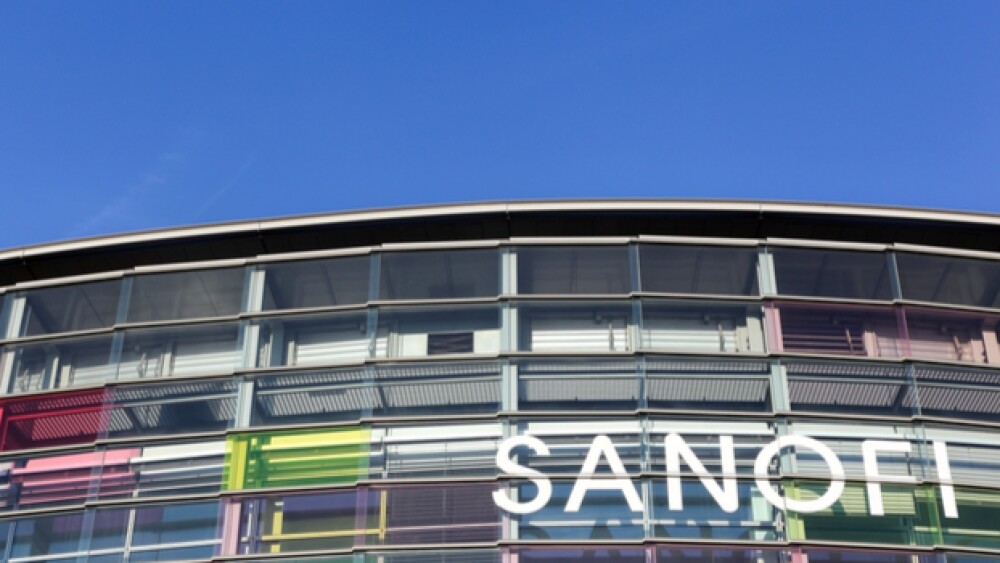Thirteen of those were development programs, the remaining 25 research-stage. In September, the company indicated it was on a cost-cutting program, planning to save 1.5 billion euros this year. Of the programs it is dumping, the most prominent is a mid-phase drug for respiratory syncytial virus (RSV), ALX-0171.
ricochet64 / Shutterstock.com
What a difference a year makes. In January 2018, Paris-based Sanofi marked the start of the year by acquiring Waltham, Mass.-based Bioverativ for $11.6 billion and Ghent, Belgium-based Ablynx for $4.8 billion.
A year later, at its fourth-quarter and annual report today, Sanofi announced it has killed 38 R&D programs, prioritizing oncology, immunology, rare disease and rare blood disorders. Thirteen of those were development programs, the remaining 25 research-stage. In September, the company indicated it was on a cost-cutting program, planning to save 1.5 billion euros this year.
“In the fourth quarter, we continued the momentum of the previous quarter and we delivered 5 percent full-year business EPS growth, at the high end of our guidance,” stated Olivier Brandicourt, Sanofi’s chief executive officer. “In 2018, we executed on important launches including Dupixent, Libtayo and Cablivi, as the headwinds from our U.S. LoEs (loss of exclusivity) began to moderate. Additionally, the acquisitions of Bioverativ and Ablynx provided the foundation to build a leading Rare Blood Disorder franchise and to enhance our biologic discovery capabilities. As we enter 2019, our focus remains on delivering our business priorities and transforming Sanofi to address the evolving business dynamics facing our industry.”
Just yesterday, the U.S. Food and Drug Administration (FDA) approved Cablivi (caplacizumab-yhdp) in combination with plasma exchange and immunosuppression to treat acquired thrombotic thrombocytopenic purpura (aTTP) in adults. It is the first FDA approved drug for aTTP. Cablivi was a drug Sanofi picked up when it acquired Ablynx.
Of the programs it is dumping, the most prominent is a mid-phase drug for respiratory syncytial virus (RSV), ALX-0171. It is also a program it picked up with Ablynx.
The company has also ended a collaboration with MyoKardia, which is behind several of the abandoned programs, and last year the company ended a deal with Immune Design that was related to the TLR4 peanut allergy program.
Total net sales for the quarter were 8.997 billion euros, with full-year sales of 34.463 billion euros. The largest area of growth for the quarter and the year was Specialty Care, with sales of 2.328 billion euros, an increase of 35.2 percent, and 8.269 billion euros for the year, an improvement of 29 percent. The worst area, however, was Generics. For the quarter, Generics sales were 270 million euros, a decrease of 33.8 percent. For the year, Generics sales were 1.490 billion euros, a decrease of 9.8 percent.
The hottest drugs in its Pharmaceutical franchise were Cerdelga, for Gaucher’s disease, which brought in 44 million euros for the quarter, an increase of 33.3 percent, and 159 million euros for the year, an increase of 31 percent. This was followed by Aldurazyme, for Hurler and Hurler-Scheie diseases, which brought in 54 million euros for the quarter, up 16.7 percent, and 206 million euros for the year, an increase of 6.7 percent.
The company’s multiple sclerosis franchise, the drugs Aubagio and Lemtrada, brought in 542 million euros for the quarter and 2.049 billion euros for the year. The company’s Diabetes franchise, like much of the diabetes market, was down. Total Diabetes sales for the quarter was 1.375 billion euros, down 10.5 percent, and 5.472 billion euros for the year, down 10.4 percent.
The company also updated its R&D strategy, increasing its focus on Specialty Care areas, oncology, immunology, rare disease and rare blood disease, while also remaining committed to vaccines. Sanofi noted that, “Since 2017, the number of R&D programs in these areas has increased significantly, and they now represent over 90 percent of Sanofi’s clinical portfolio.”
Aside from the 38 programs it cut, the company says it potentially will be able to submit nine new drugs and 25 additional indications to regulators over 2019 to 2022.





